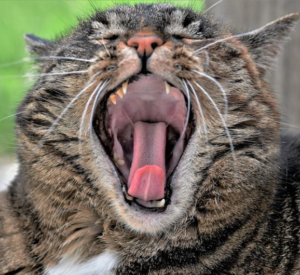The S Sound
The S Sound
The S sound is a common one in American English. It is considered a consonant and comes in all positions of words. For example, the initial position as in Sam, the medial position as in message, and the final position as in bus. To be even more specific, it is an alveolar – voiceless – fricative. So, what does that mean and why is it relevant?
All three terms refer to the manner, place, and voicing of consonants. Alveolar is the place, or how the articulators work together to produce the sound. For alveolar sounds, the tip of the tongue touches the alveolar ridge which is the ridge behind the top teeth.
Voiceless refers to voicing. Sounds are either voiced or voiceless. All vowels are voiced while only half of English consonants are. Voiced sounds make the vocal folds vibrate when they are produced. With voiceless sounds, there is no vocal fold vibration as air passes through. The S sound is voiceless.
Fricative refers to how the airflow passes through the articulators. With fricatives, a consonant is produced when air squeezes through a small gap. With the S sound, that small gap is between the tongue tip and the alveolar ridge.

Tippers and Dippers
Above, I mention that the S sound is an alveolar sound, meaning that the tongue tip touches the alveolar ridge behind the top teeth. This is how the majority of people produce this sound. These would be the tippers.
However, there is a second way to produce the S sound with the same phonemic result. These are called the dippers and they produce the sound with their tongue tip down and behind their bottom teeth.
There isn’t much difference in these productions and most listeners can’t even tell if you are a tipper or dipper. Although, I would say that this is one of my party tricks. I can tell who the dippers are based on their tongue position. When they produce a word with S, you can see the body of the tongue.
Common Variations
The S sound can be tricky for some accent clients. It is especially difficult to know when words are written with the letter S, if that sound should be pronounced as an S or Z. There are rules for this but there are also many exceptions. This is something that native speakers have just memorized.
Some languages have this sound but there may be more or less aspiration, which is a fancy way of saying more or less airflow. Another language difference is that some languages may not have many voiceless sounds, so those speakers may voice S, which becomes the Z sound as in zebra or buzz. Another variation could be replacing the S sound with a stop sound such as T.
Lastly, some clients may have a frontal or lateral distortion in English as well as their native language. This is commonly referred to as a frontal or lateral lisp and would need to be addressed by a Speech-Language Pathologist.

Are you a tipper or dipper? Let us know in the comments below.

